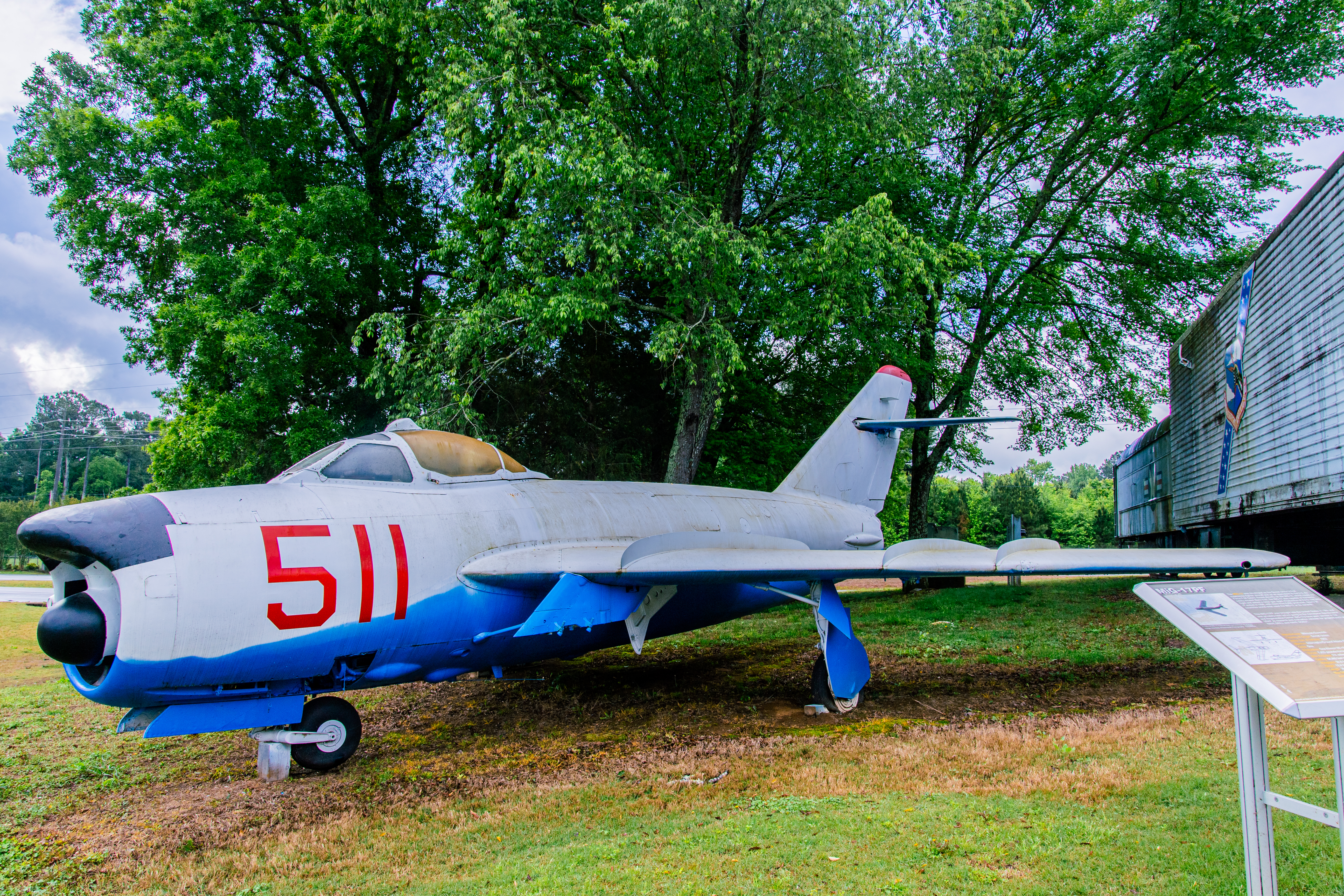
The MiG-17 was the first Soviet-built fighter to have an afterburning engine that allowed it to achieve Mach 1 in level flight. It first flew in 1950 but did not participate in the Korean War. Over 6000 MiG-17’s were produced for use by nearly 30 different air forces worldwide. Of its many variations the MiG-17PF was the Soviet Union’s first missile-armed interceptor. It was carried four AA-1 "Alkali" radar-guided missiles and 37- and 23-mm guns. After final Soviet deliveries in 1958, various models of the MiG-17 were produced by Poland and China.
During the early years of the Vietnam War, the MiG-17 was considered outdated by many US pilots. However its great maneuverability, especially at low altitudes, showed it could defeat all contemporary US aircraft. Many of the most accomplished North Vietnamese pilots flew the MiG-17, including their leading ace, Colonel Tomb. It was not until U. S. Air Force and U. S. Navy fighter pilots were able to practice their air-to-air skills against a captured MiG-17 that the ratio of air-to-air kills over the skies of North Vietnam improved. This classified air-to-air evaluation, Project Have Drill, was conducted at Area 51 with surprising initial results. “No Navy pilot who flew in the project defeated the MiG-17 Fresco in the first engagement.“ The initial recommendations of the Navy evaluation were that its A-6, A-7, and A-4 aircraft not engage the MiG-17. However, the flights also revealed the MiG-17's shortcomings that allowed improved kill ratios. Specifically, the Navy revised its tactics, and during the remainder of the Vietnam War, the Navy kill ratio vs. the MiG-17 climbed to 8.33 to 1 (from an earlier 2.75 to 1 rate). MiG-17PF, 1D 05-11 (LIM 6M, Red 511) is currently on display at Aviation Challenge. It was built in Poland and brought into the United States in 1988 with standard Polish bare metal skin and red markings. It was privately held before it participated in Mobile Integrated Threat Tests from 1988 to 1990. During this series of evaluations in the desert of New Mexico, Soviet aircraft were operated by Red Eagle Squadron to simulate a portion of an integrated Soviet combat operation. Although our aircraft is currently wearing a North Vietnamese camouflage pattern, there is no indication that this aircraft was ever in North Vietnam. This aircraft is on loan from the National Museum of the United States Air Force.

